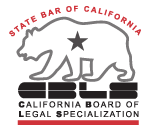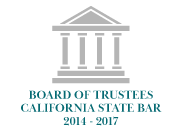Many things can go wrong when you are developing an estate plan. A failure to follow-up with appropriate paperwork can invalidate your wishes and land your estate in probate court – a scenario you intended to avoid by creating the estate plan in the first place.
Many people use a revocable trust, also called a living trust, as a primary estate-planning tool to transfer assets. But all too frequently, they fail to “fund” the trust. They assume that since the trust was created and the documents signed, the process is complete. It is not. The next step – a crucial one – is to fund the trust.
Funding a trust requires that you retitle the assets and accounts and place them in the trust name. This process isn’t generally required for household objects and personal effects, and the transfer of these items is as simple as including instructions in the trust documents.
However, other assets require the additional step of retitling, such as:
- Real Estate: You must change the deed to reflect the new owner, the trust.
- Financial Accounts: You must change the name of record or beneficiary designation to the trust with the accounts custodian. You may have to open a new account and transfer the assets into it to do this in some instances.
- Vehicles: The registration should be changed to reflect ownership by the trust.
While these steps aren’t overly burdensome, they are often skipped or forgotten. Yet, funding the trust is as essential as creating it. A failure to do so means your trust is either wholly or partially unfunded. If it is partially unfunded and the total value of the unfunded assets exceeds a certain value ($166,250 in 2020, although this figure is adjusted for inflation annually), the estate will go to probate in the state of California. An entirely unfunded trust will also go to probate, and the probate process complicates the distribution of your assets and will delay the transfer of ownership – for months or years, in some cases.
You will also want to review and update asset ownership whenever there is a change to it. Some assets may be owned jointly, such as with a spouse or a child. Similar to how you will want to review beneficiary designations regularly, you will also want to review asset ownership. When you go through different life changes – like the birth of a child or marriage/divorce – the asset ownership record should be updated to reflect the current circumstances. You will also want to review this when you purchase or sell major assets, such as real estate.
Another critical step in estate planning is showing your intent to fund a trust. It would be best if you always left a documentary trail of proof of your intent to fund the trust. This intent is shown by including a schedule that lists the assets you intend to transfer to the trust with the trust’s formation documents. This schedule will be vital if it becomes necessary to fund a trust after death has occurred.
Certain assets should never be funded to a revocable trust. Retirement accounts and life insurance policies remain outside of the trust and transfer to the named beneficiary upon death. However, you can name the trust as the beneficiary of these accounts – but it could be more costly to do so than to name your beneficiaries directly.
For instance, if the trust allows distributions to extend across the maximum allowable period, the income tax liability can be reduced. If there are no provisions like this for these accounts, the distributions are accelerated and incur a higher income tax liability.
It’s also crucial for individuals to understand that transferring asset ownership to the revocable trust is their responsibility. Many individuals assume that this will be taken care of by the estate planner. Unless it is specifically included in the agreement with the estate planner, you should assume that you are responsible for transferring asset ownership.
Ensuring that your estate plan is comprehensive and complete is difficult. There are many steps in the process to establish that your plan is legal and will allow for the transfer of assets as you intend. In most instances, individuals can benefit from the guidance of a knowledgeable and reputable estate planning lawyer who can help them through every step of the process. Their assistance can often provide peace of mind that your assets will transfer to your beneficiaries without encountering any unforeseen problems.








